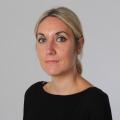
IT'S been a hard few months since the start of the year but the light at the end of the tunnel is starting to get brighter.
After more than three months in lockdown, life will start to gradually get back to normal as restrictions are eased over the coming weeks.
Pubs, hairdressers, gyms and shops reopened their doors on Monday for the first time this year.
And next month we will see more measures lift when hospitality will resume indoors and hotels, theatres, cinemas and museums open their doors.
International travel may also be a possibility.
Here we look at how things have improved over the past few months across Bournemouth, Christchurch and Poole since the turn of 2021 to where we are now.
A map on the government website using data from Public Health England breaks down the number of coronavirus cases into neighbourhoods called 'Middle Super Output Areas' (MSOAs), which are smaller than council wards and based on population rather than geographical area.
It colour codes MSOAs depending on their seven-day rolling rate, with areas placed into the boundaries of 0-10, 11-50, 51-100, 101-200, 201-400, 400 to 799 and 800 plus.
Places with a high MSOA rate appear on the map in purple (400 to 799) or dark purple (800 plus).
Areas that appear white are described as “suppressed” meaning they have fewer than three cases.
January 2

Just after the Christmas and New Year break, there were a total of 2,404 cases across the BCP area. The rate per 100,000 people was 608.1.
Dozens of areas across the conurbation had an MSOA rate between 400 and 799.
A total of five areas – Bearwood, Newtown, Penn Hill, Westbourne and Iford – had rates above 800.
Westbourne had the highest rate at that time at 1,071.6.
The number of cases had rocketed to 2,404, which was up 141 per cent on the previous week with 1,408 additional cases being recorded.
The rolling rate was 608.1.
The peak of the latest wave was still yet to be reached unfortunately with hospitals warning that things would get worse towards the end of January.
February 6
By the start of February, the area had transformed from a sea of purple to blue.
Most areas now had an MSOA rate between 200 and 399 as the impact of the lockdown and the start of the vaccination programme began to be seen.
Just three areas across Bournemouth, Christchurch and Poole had a rate between 400 and 799 and appeared purple on the map.
These areas were Hamworthy East, Talbot & Branksome Woods and Burton & Airport.
There were still almost 1,000 cases being reported across BCP with a rate of 249.7.
March 6
Things had started to turn a corner across the conurbation with cases and rates plummeting.
Many areas were either showing as suppressed meaning they had fewer than three cases or had rates between 10 and 99.
There were no hotspots or areas at risk at becoming hotspots.
A total of 122 cases were confirmed in the BCP area and the rolling rate was 30.9.
April 3
There was a very slight change with more areas now showing as suppressed with the number of cases and rate decreasing.
There were 78 cases with a rate of 19.7.
Just 15 locations across BCP had more than three cases each.
Where are we now?
The latest data for the seven days to April 10 shows there were just 48 cases in the BCP area, giving a rolling rate of 12.1.



Comments: Our rules
We want our comments to be a lively and valuable part of our community - a place where readers can debate and engage with the most important local issues. The ability to comment on our stories is a privilege, not a right, however, and that privilege may be withdrawn if it is abused or misused.
Please report any comments that break our rules.
Read the rules here